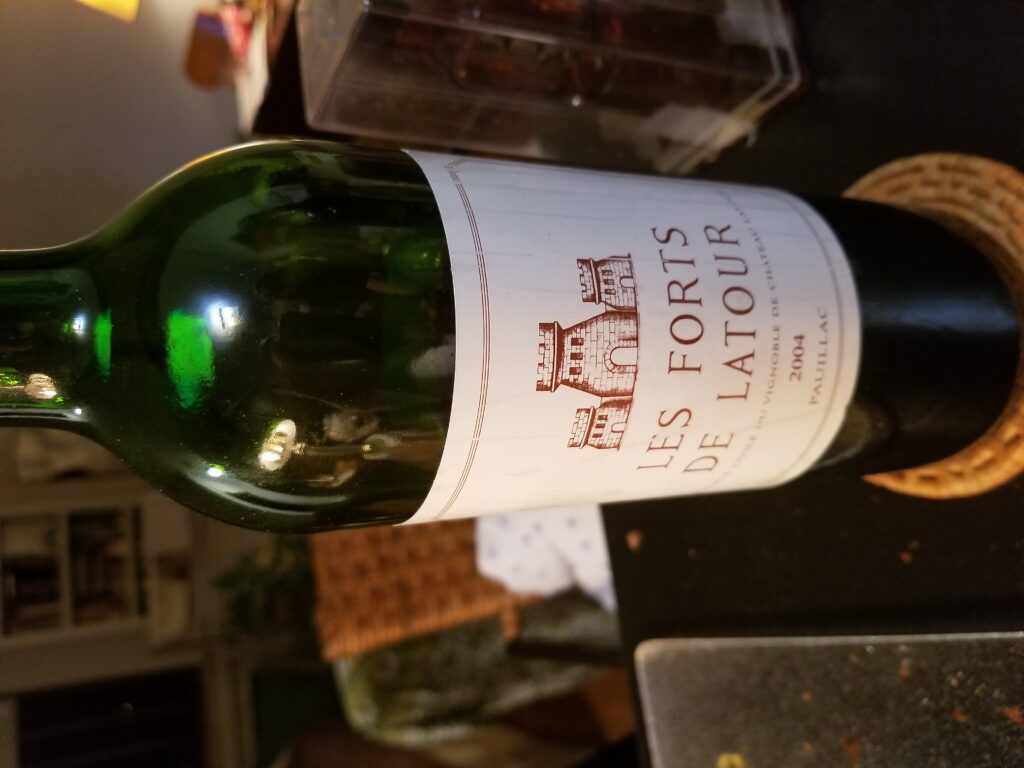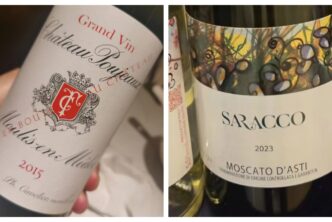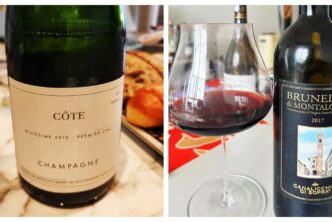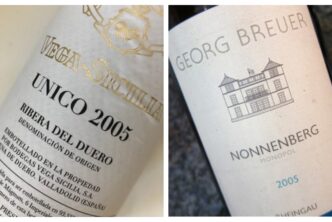Château Latour 2004 Les Forts de Latour Pauillac 93

by Robert Millman
Some tasters believe that Les Forts de Latour is the second wine of Château Latour, the Grand Vin. In an extended sense this is true: but in the precise sense, it is not true. The wine that is produced and labeled as Les Forts de Latour is made from numerous plots owned by Latour whose grapes are never included in Latour itself. The original source of the fruit is a plot called Enclos whose vines are now more than 50 years old. Supplementing Enclos are three plots: Pinada, Petite Bailley and St. Anne. Even though Château Latour has owned these lieu-dits for more than a century, their grapes were not used at Latour until Les Forts de Latour started to be bottled in 1966. Since 2005, Latour has added 12 hectares the grapes of which are part of Les Forts de Latour, an independent wine. Also, Les Forts can contain up to 30% Merlot in the final blend. This helps make the wine more accessible and faster maturing than the slow-evolving, no-concession character of the Grand Vin itself. But there is no mistaking the wine—Les Forts could not be made anywhere else but at the Château itself. The dense black color, enveloping dark-fruits, the cedary bouquet, the endless finish are all quintessential aspects of Latour itself. Prices are like those of a super-second Bordeaux, and Les Forts very nearly reaches First Growth quality in top vintages.
I recently opened my last bottle of the 2004 Les Forts de Latour which had been resting in my cellar for thirteen years. The 2004 vintage was hardly a fashionable one. Characterized by a very large crop, it suffered from rain during the picking period after a cool summer and beneficial September (it was all but the opposite of the over-heated 2003 vintage). An herbaceous note was present in many of the young Medoc wines at the time, but no trace of under-ripeness was evident in either the 2004 Latour or Les Forts de Latour early in their lives. And nothing about the 17-year-old Les Forts suggested imperfectly ripe fruit either. It is a well-known fact that Latour excels in off-vintages: the estate’s well-deserved reputation for rigorously scrupulous sorting has enabled this property to make excellent wines in lesser vintages over the decades. Of course, the adage “there are no great wines just great bottles” applies to wines that are nearly 20 years old and older. In this case, a recalcitrant cork required much work and careful decanting to yield a clear liquid. I am happy to report that it was very much worth the effort. First the color—deep dark, almost black with not so much as a hint of browning. This augured well. On the nose the wine was saturated with cedar, tobacco, black fruits and a half-smile of Merlot sweetness. Very Latour! The most remarkable aspect of the taste was the extraordinary conclusion. Some wines have a finish. The 2004 Les Forts, like its more famous stablemate, never seems to end: it is more or less up to the taster to decide when to stop the conclusion! I believe it is this building up to the proud coda that is what distinguishes Latour and Les Forts de Latour from the other great Bordeaux. Wines like this linger in memory for a long time. Drinking window: 2022-2030.
Trediberri 2017 Barolo 93

by Ian D’Agata
I am one of the first, possibly the first, interrnational wine writer to have written about Trediberri’s wines and winery, as I visited there the minute or so the family started proceedings: such is the advantage of living in Italy full-time, as I was doing back then. Nicola Oberto is a young man who, the minute he opens his mouth and starts talking, will strike you immediately for his passion, knowledge, and frankly, intelligence. He is what Italians will qualify as a “tipo sveglio” (literally an “awake fellow”, meaning his brain is turned on and that he uses it to good effect), a huge complement (in Italy, nobody wants to be qualified as an “addormentato”, as in “cerebrally asleep”). In short, there are fewer Italian winemakers I actually enjoy sitting down and listening to as I more often than not also learn from them (to help you put that comment in perspective, two others are Roberto Conterno of Giacomo Conterno and Giacomo Conterno of Aldo Conterno). And one taste of this young man’s wines will only confirm that you are in the presence of someone more talented than is the norm.
The Trediberri estate was founded in 2007, when Nicola Oberto, his father Federico (who had been the cellarman / cellarmaster at the well-regarded Renato Ratti estate in La Morra from 1970 to 2005, when he finally retired) and their friend Vladimiro Rambaldi, acquired five hectares circa exclusively for the production of Barolo in the cru of Berri. In fact, the Oberto family already owned vineyards, and what vineyards! For their good fortune, 2.8 hectares in the Crus of Rocche dell’Annunziata and Torriglione, that had been previously rented out to the Renato Ratti winery but that the Oberto clan took hold of again once again after they began making their own wine.
Trediberri (meaning the “three of Berri”, as in the three friends from or of Berri) first wine was released in 2011; today they farm and make wine from 10.5 hectares of vineyards (they are currently renting three hectares of Dolcetto and Nebbiolo in Vicoforte, the most southern village of the Langhe Region; from 2012 until 2017 included, they farmed another hectare of Nebbiolo destined for Barolo production in the Capalot cru of La Morra, but unfortunately from 2018 that contract was not renewed). While the estate flagship is the Barolo Rocche dell’Annunziata, insiders know that Trediberri’s classic or regular Barolo is an excellent wine in its own right. While not made with vines quite as old as those of the Rocche dell’Annunziata cru (some of which are over 75 years old), Trediberri’s Barolo is still a very complex, concentrated wine. The Trediberri 2017 Barolo is bright red in colour. Textbook aromas of sour red cherries, red berries, rose, violet and sweet spices jump from the glass. Then more of the same in the mouth, with lively acidity and youthfully chewy but not gritty tannins extending and supporting the flavours nicely on the long, refined finish. A measure of Nicola Oberto’s talent is that in a year as hot and dry as 2017, when many a Barolo estate turned out tough wines marked by tannins that will never resolve fully, Trediberri did not fare at all as poorly, succeeding in making a Barolo that while obviously the child of a hot year, is light on its feet and rather well-balanced. I remember tasting this very wine from barrel a few years ago during a winery visit and already then it had struck me as a very successful wine; and there is nothing in my glass today that would have me change my mind. Made from grapes picked in different vineyards of La Morra (in fact, this is the last vintage to be made with grapes from the Capalot cru as well as the others), the alcoholic fermentation took place in concrete tanks for about twelve-fourteen days (with the must remaining in contact with the skins for about three weeks). Then malolactic was carried out in oak and the wine aged for about twenty months in 52-hl and 25-hl oak barrels. Last but not least, the wine’s pretty label is by Pierflavio Gallina, one of Piedmont’s foremost artists, whose works are present in both private and public collections, such as those of the Robert Mondavi Collection in California, the Museo Civico di Recanati, the Regional Enoteca in Barolo. Drinking window: 2024-2032 (the dtaes indicated is when I expect this wine to be drinking best, but t will last much longer in a good cellar).

 中文
中文



